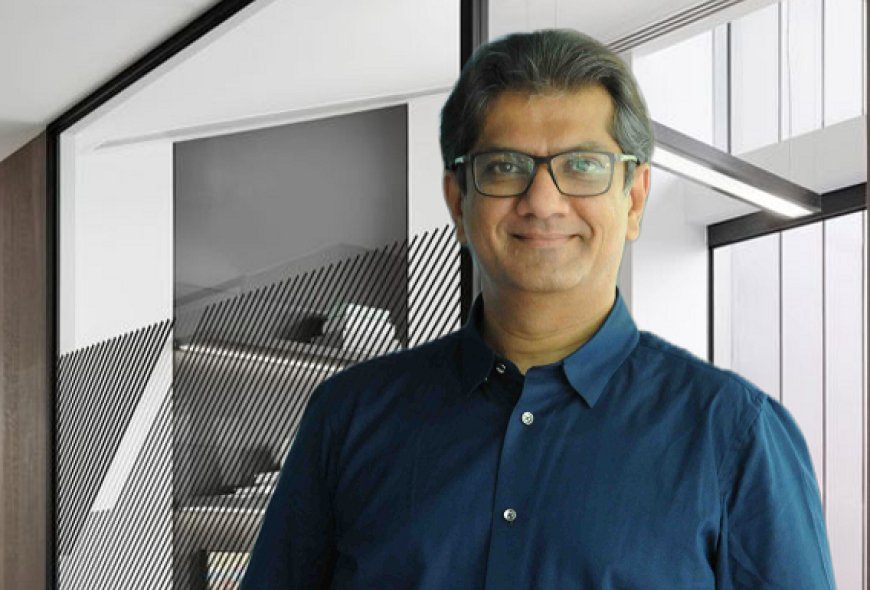Architecture to shoulder growing demand for sustainable data centres
Ar. Hardik Pandit, Director, APICES Studio Pvt Ltd As cloud computing services have become more popular, data centre demand has risen. Data centre development has high environmental impact. These buildings' energy usage and carbon impact have raised sustainability-related concerns. Architects and data centre operators use creative and sustainable design practices to reduce total energy usage

Ar. Hardik Pandit,
Director, APICES Studio Pvt Ltd
As cloud computing services have become more popular, data centre demand has risen. Data centre development has high environmental impact. These buildings' energy usage and carbon impact have raised sustainability-related concerns. Architects and data centre operators use creative and sustainable design practices to reduce total energy usage and reduce the adverse impact on the environment. Data centres can save energy and improve efficiency using space design, airflow management, and high-density equipment placement. Following are the architectural factors that support the growing demand for sustainable data centre designs that enable a greener digital future.
Location selection
Architects consider data centre location criteria in order to maximise performance and efficiency. Geographic stability, with a low risk of natural disasters like earthquakes, floods, and hurricanes, is crucial. This reduces interruptions and ensures uninterrupted data processes. Proximity to users or network hubs minimises latency and accelerates data transmission. Selecting a location with a reliable power infrastructure and redundant power sources provides an uninterrupted power supply and minimises downtime.
Material choice
Architects construct data centres using a strategic combination of materials that deliver structural integrity, safety, and tailored functionality. Critical materials include robust structural steel, renowned for its strength, durability, and load-bearing capacity, enabling future modifications and expansions. Concrete provides stability, fire resistance, and excellent noise insulation for floors, walls, and foundations. Modular panels afford flexibility, insulation, and ease of installation for partition walls, equipment enclosures, and server cabinets. Fire-rated materials, insulation, and electromagnetic shielding ensures safety, regulate temperature and humidity, protect critical equipment from hazards, and ward off external electromagnetic interference.
Efficient space planning
Optimising data centre layout and organisation require efficient space planning. Data centre architects, operators, and technicians must understand the different equipment. All equipment contribute to a healthy ecology, from storage devices to network systems. Data centre specialists can build, maintain, and optimise these vital facilities by understanding the complexity and diversity of these equipment types. Architects may enhance airflow and energy efficiency by carefully placing servers, networking equipment, and storage devices. Data centre layouts should promote airflow, reduce hotspots, and maximise cooling. Strategic space planning helps data centres use space efficiently and save energy.
High-density equipment placement
As data centre equipment becomes more powerful and compact, architects must prioritise the placement of high-density equipment. Strategically locating high-density equipment near cooling sources allows for more efficient cooling and eliminates over or undercool spots throughout data centre. Architects can maximise cooling efficiency and reduce energy consumption by carefully designing the layout to accommodate high-density equipment. Factoring the design in accountancy for high-density equipment placement ensures that equipment operates within optimal temperature ranges, minimising the risk of downtime and extending the lifespan of hardware components.
Efficient cooling systems
Data centre cooling systems are crucial to the smooth operation of any data centre. They've undergone radical transformations over the years, and this trend will only accelerate. Data centres must stay one step ahead of the competition by implementing the latest and greatest technological advancements as they become available. Traditional air conditioning methods used in data centres are often energy-intensive. To address this, architects are incorporating energy-efficient cooling systems into their designs. By adopting these advanced cooling technologies, data centres can maintain optimal temperatures while minimising environmental impact.
Redundancy and resilience
Architects must prioritise redundancy and resilience in a fast-changing digital world where data drives enterprises. In the connected world, they help data centres succeed and thrive. Architects carefully create redundant and resilient systems benefiting the Data Centre. They assess each data centre's need, considering expected duties, growth estimates, and service importance. Architects can balance redundancy, performance, and cost-effectiveness to maximise resilience and resource allocation.
Renewable energy integration
Integrating renewable energy sources is a crucial strategy for reducing the adverse environmental impacts. Architects must design data centres that can harness renewable energy, such as solar or wind power. Additionally, energy storage solutions like battery systems and flywheels, store excess energy for use during peak demand or as backup power, enhancing the sustainability of data centres.
The growing demand for sustainable data centres requires careful architectural considerations because efficient space planning, airflow management, high-density equipment placement, and other sustainable strategies can reduce energy consumption and environmental impact. Energy efficiency, the use of renewable energy sources, and the incorporation of advanced monitoring and control technology are all factors that architects must consider when developing data centre architecture. A cleaner and more sustainable digital future will be achieved as architects are practising smarter, greener and sustainable data centre designs.







